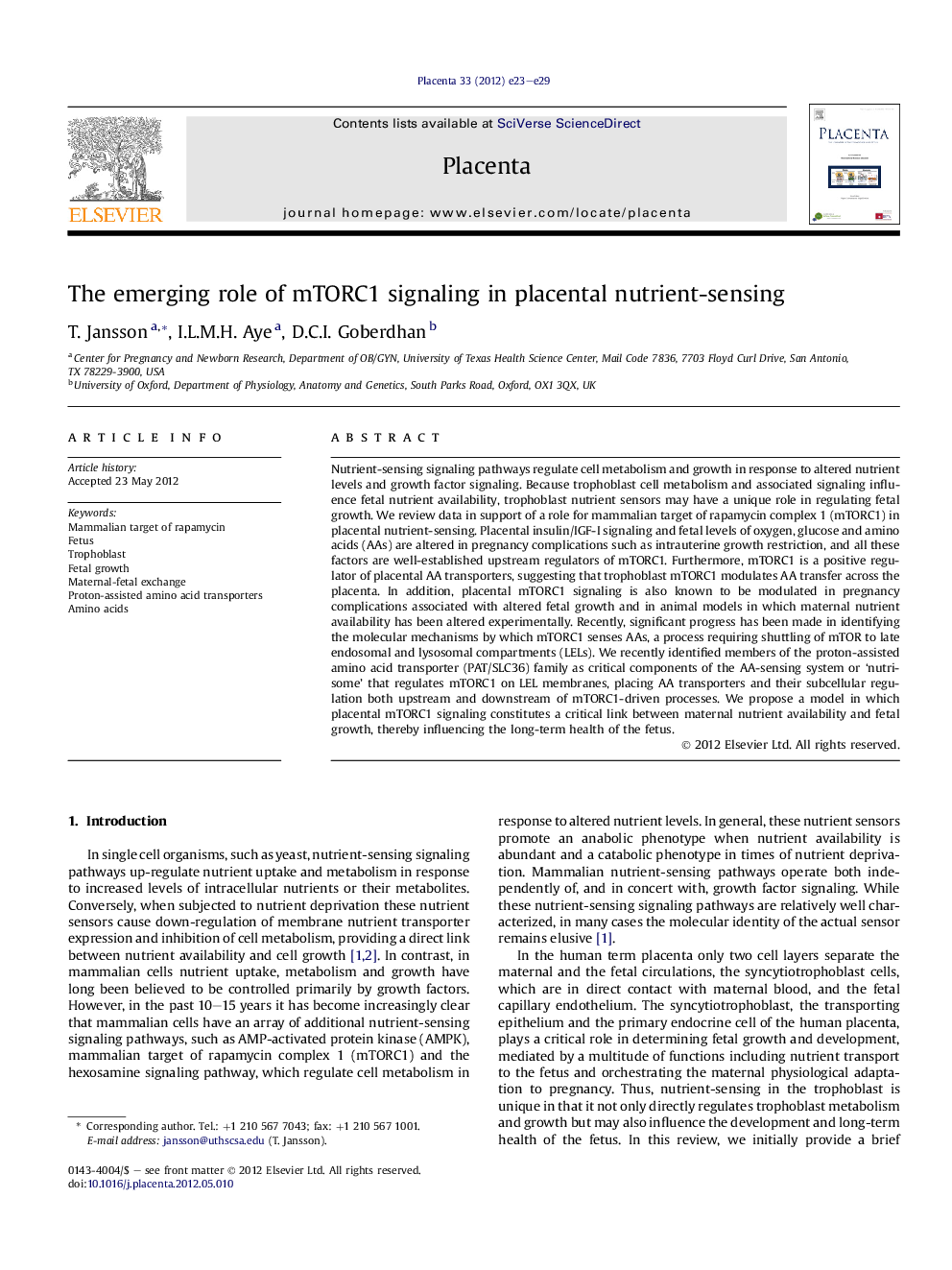| Article ID | Journal | Published Year | Pages | File Type |
|---|---|---|---|---|
| 2789344 | Placenta | 2012 | 7 Pages |
Nutrient-sensing signaling pathways regulate cell metabolism and growth in response to altered nutrient levels and growth factor signaling. Because trophoblast cell metabolism and associated signaling influence fetal nutrient availability, trophoblast nutrient sensors may have a unique role in regulating fetal growth. We review data in support of a role for mammalian target of rapamycin complex 1 (mTORC1) in placental nutrient-sensing. Placental insulin/IGF-I signaling and fetal levels of oxygen, glucose and amino acids (AAs) are altered in pregnancy complications such as intrauterine growth restriction, and all these factors are well-established upstream regulators of mTORC1. Furthermore, mTORC1 is a positive regulator of placental AA transporters, suggesting that trophoblast mTORC1 modulates AA transfer across the placenta. In addition, placental mTORC1 signaling is also known to be modulated in pregnancy complications associated with altered fetal growth and in animal models in which maternal nutrient availability has been altered experimentally. Recently, significant progress has been made in identifying the molecular mechanisms by which mTORC1 senses AAs, a process requiring shuttling of mTOR to late endosomal and lysosomal compartments (LELs). We recently identified members of the proton-assisted amino acid transporter (PAT/SLC36) family as critical components of the AA-sensing system or ‘nutrisome’ that regulates mTORC1 on LEL membranes, placing AA transporters and their subcellular regulation both upstream and downstream of mTORC1-driven processes. We propose a model in which placental mTORC1 signaling constitutes a critical link between maternal nutrient availability and fetal growth, thereby influencing the long-term health of the fetus.
